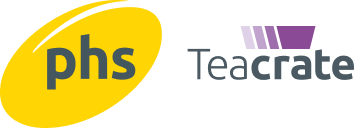In industries where cleanliness and hygiene are paramount, such as food retail, healthcare, and pharmaceuticals, the risk of cross-contamination poses a significant concern. Plastic crate rental services play a vital role in facilitating efficient logistics and storage operations, but they also introduce the potential for contamination if proper hygiene protocols are not followed. As the leading providers of rental crates in the UK, we will explore the importance of addressing cross-contamination risks associated with plastic crate rental and outline essential hygiene protocols to mitigate these risks effectively.
Understanding Cross-Contamination and Why it Matters
Cross-contamination occurs when harmful microorganisms, allergens, or other contaminants are transferred from one surface or item to another. In the context of plastic crate rental, cross-contamination can occur during various stages of the supply chain, including storage, transportation, and handling. Contaminated crates can compromise the safety and quality of products, leading to potential health risks for consumers and reputational damage for businesses.
Common sources of cross-contamination include contact with raw foods, improper cleaning and sanitation practices, and exposure to contaminated environments. Effective hygiene protocols are essential to prevent the spread of contaminants and maintain the integrity of products throughout the supply chain.
Hygiene Protocols for Plastic Crate Rental
Implementing robust hygiene protocols is critical to ensuring the safety and quality of products transported and stored in plastic crates. These protocols encompass a range of practices aimed at minimising the risk of cross-contamination and maintaining hygienic conditions. Below are key hygiene protocols to consider when renting plastic crates:
Cleaning and Sterilisation Procedures:
Before and after each use, plastic crates should undergo thorough cleaning and sterilisation to remove any visible debris, residue, or microorganisms. Use food-safe cleaning agents and disinfectants recommended for plastic surfaces, ensuring complete coverage and sufficient contact time for effective sterilisation.
Colour-Coding Systems:
Implement colour-coded systems to differentiate crates used for different purposes or containing different types of products. For example, designate specific colours for crates used for raw meat, cooked foods, produce, and non-food items. This helps prevent cross-contamination by ensuring that crates are used appropriately and not mixed with incompatible products.
Segregation of Contaminated and Clean Crates:
Establish clear procedures for segregating crates that have been in contact with raw or contaminated materials from those designated for clean products. Use designated areas or storage racks to separate contaminated and clean crates, minimising the risk of accidental cross-contamination.
Employee Training and Education:
Provide comprehensive training to employees involved in handling plastic crates, emphasising the importance of hygiene practices and adherence to protocols. Training should cover proper cleaning techniques, sanitisation procedures, personal hygiene, and the significance of preventing cross-contamination. Regular refresher training sessions can help reinforce these practices and ensure compliance.
Regular Inspection and Maintenance:
Implement routine inspection and maintenance schedules to identify any damage, wear, or signs of contamination in plastic crates. Inspect crates for cracks, stains, or odours that may indicate the presence of contaminants. Damaged or compromised crates should be removed from circulation and either repaired or replaced promptly to prevent potential risks.
Documentation and Record-Keeping:
Maintain detailed records of cleaning and sanitization activities, including dates, times, and responsible personnel. Document any incidents or issues related to cross-contamination, along with corrective actions taken. This documentation provides a traceable history of hygiene practices and facilitates accountability and continuous improvement.
Supplier Communication and Collaboration:
Maintain open communication with plastic crate rental suppliers such as phs Teacrate to ensure alignment on hygiene standards and expectations. Collaborate with suppliers that can evidence high standards of cleaning and sterilisation processes, as well as their adherence to industry regulations and best practices. Request documentation or certifications demonstrating compliance with hygiene standards and quality assurance measures.
Audits and Quality Assurance Checks:
Conduct regular audits and quality assurance checks to assess compliance with hygiene protocols and identify areas for improvement. Engage internal or third-party auditors to evaluate cleanliness, sterilisation, and adherence to hygiene standards throughout the supply chain. Address any deficiencies or non-conformities promptly and implement corrective actions as necessary.
To summarise what has been covered, addressing cross-contamination risks is essential for ensuring the safety, quality, and integrity of products transported and stored in plastic crates. By implementing robust hygiene protocols and adherence to best practices, businesses can minimise the risk of cross-contamination and maintain hygienic conditions throughout the supply chain. Effective cleaning and sanitization procedures, colour-coding systems, employee training, regular inspections, and collaboration with suppliers are key components of a comprehensive hygiene program for plastic crate rental. By prioritising hygiene and cross-contamination prevention, businesses can safeguard consumer health, uphold regulatory compliance, and protect their reputation in the marketplace.
To learn more, contact phs Teacrate today.
